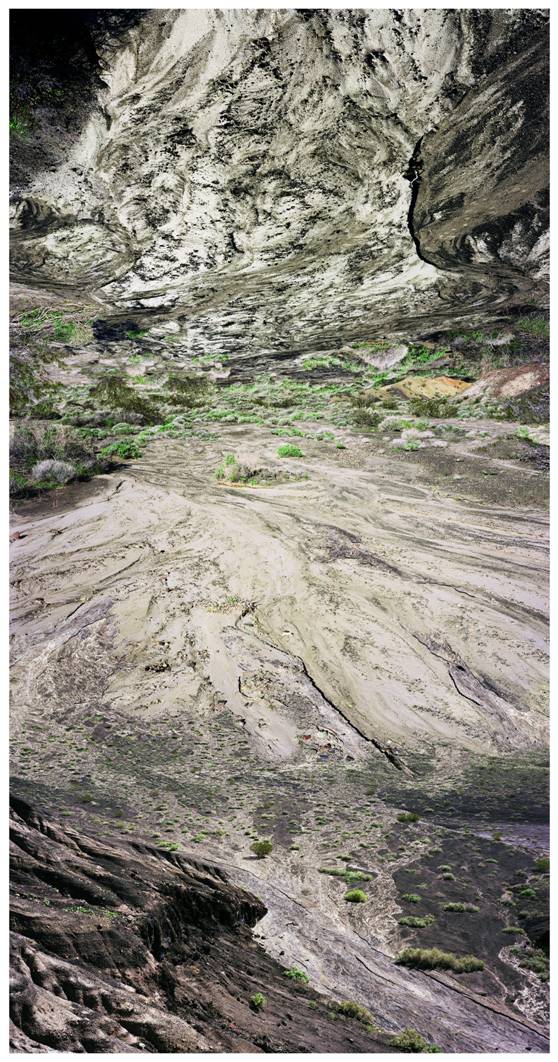
Noriko Furunishi, Untitled (Grey Dry Stream), 2005. Chromogenic color print. 91 1/2 × 48 inches (232.4 × 121.9 cm). Institute of Contemporary Art/Boston. Gift of Anthony Terrana. Courtesy the artist © Noriko Furunishi
Noriko Furunishi (Born 1966 in Kobe, Japan) is known for her otherworldly depictions of deserts, mountains, ridges, and riverbeds through a combination of traditional and digital photographic techniques. Many of her photographs have vertical formats and layered compositions and recall traditional Japanese and Chinese landscape painting. Rather than provide a fixed point of view, Furunishi’s work invites the viewer’s eye to wander across the photograph, allowing the photographic image to freely recede and advance.
Furunishi took the source photographs for Untitled (Grey Dry Stream) near Death Valley, California, using a 4 x 5 viewfinder camera; she photographed several different locations, each from multiple angles and positions. She then scanned these negatives into a computer, using the digital files to compose and collage multiple views. With digital technology, the landscape becomes a flexible medium that Furinishi can manipulate at will—eliminating details, adding others, mixing perspectives, and even blending different locations or times of day. Nature’s vibrant colors and varied textures are the raw materials she uses to create her compositions. Untitled (Grey Dry Stream) presents a disorienting, dreamlike view of the world. It hints at terrain or topography we may have visited or seen in a photograph; at the same time, it moves beyond this familiarity and suggests another dimension beyond our sight or time. The photograph is part of her Landscapes series, in which space and earth are warped, twisted, and distorted, confounding viewers’ points of view.
Shepard Fairey (Born 1970 in Charleston, SC) is one of the most prolific and influential street artists working today. Fairey first became known for creating a stencil of the face of wrestler André the Giant that he spray-painted and wheat-pasted on public surfaces in major cities internationally. He later parlayed his reputation as a street artist into art-world recognition—his first solo museum survey, Shepard Fairey: Supply and Demand, was held at the ICA/Boston in 2009, and his widely circulated portrait of Barack Obama, used in the 2008 presidential campaign, has been acquired by the National Portrait Gallery in Washington, D.C.
Marilyn Warhol is one of a set of twenty-one prints inspired by a ninety-print grid that was included in Fairey’s exhibition at the ICA. Together these prints demonstrate the scope of his artistic vocabulary, largely based on the legacy of agitprop, and sources of inspiration, taken from the realms of politics, fine art, and popular culture. For Marilyn Warhol, Fairey replaces the face of Marilyn Monroe as it appears in one of Andy Warhol’s iconic paintings with that of André the Giant, conflating the two visages above Fairey’s well-known tagline “Obey.” Here, Fairey demonstrates that he can manipulate a signature image by any artist for his own purposes, adding a complex layer to the history of appropriation art and the conversation about image ownership.